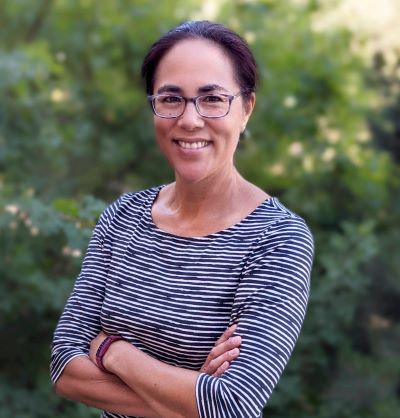Some information may be outdated.
Science Moab speaks with Kari Veblen, Utah State University professor of rangeland ecology. The Veblen lab at USU includes a diverse group of field-based ecologists who work on both public and private lands that are managed for both wildlife conservation and sustainable livestock production. The goal of the science is to be able to provide information on sustainable management of rangeland systems. We begin with Veblen describing what we mean by rangelands.

Veblen: When I think of rangelands, I think of these big, wide, open spaces that don’t have any people around. By definition, rangeland is going to be an area that is not suited for any sort of intensive agriculture and it is inhabited by these large free-roaming animals. People often think of cattle automatically but the other large, free-ranging animals on the landscape are going to be these large mammalian herbivores, like elk or deer on the Colorado Plateau, or if we’re thinking about African savannas, it might be something like elephants and zebras.
Science Moab: What type of research projects are you looking at in terms of rangeland ecology, right now, in the Western US?
Veblen: One of my areas of research is looking at rangeland restoration. So these are areas where maybe due to previous management, or due to drought, the condition of the rangeland requires repair. Various public agencies in the western United States are in charge of restoring these rangelands. One of the approaches I take is retrospectively looking at how effective the restoration approaches were. This can entail looking at a collection of restoration projects, and collecting data or looking at the data they’ve already collected, and assessing how the techniques they used worked. The other part of the restoration research that I do is trying to work with land managers to come up with new ideas. So these might be slightly riskier ideas that they’re not quite ready to go out and apply over a large landscape because they’re not sure if it’s going to work or not. But we can test them in smaller areas over shorter periods, with the idea that if it works, then there may be the potential of applying it over larger areas or other people also using that approach.
Science Moab: Ideally, what does a successful rangeland restoration look like?
Veblen: To determine if restoration has been successful or not depends on what the objectives were in the first place. In some cases, it may simply be to just reestablish plants so you don’t end up losing your soil or end up with invasive species, but you end up with useful plants—for instance, forage plants to be able to feed cattle. Another goal might be to establish wildlife habitat. When you’re establishing wildlife habitat, there’s a higher likelihood that you’ll be interested in establishing native plants. A successful restoration depends on what the initial objective was, but in general, it means trying to get some plant cover in there and then in areas where I work, usually it means trying to get in some sort of perennial plant cover.
Science Moab: Are there some restoration projects that you are involved with now on the Colorado Plateau?
Veblen: I’ve been working in the Beef Basin area studying the die-off of sagebrush for many, many years. No one’s quite sure exactly what’s driven those die-offs. What is clear is that the Division of Wildlife and the BLM have been interested in trying to reestablish sagebrush in those areas. Collaborators at the USGS, at USU, and myself have had several different data sets that have pointed to the importance of soil properties—in terms of sagebrush growth, in particular soil texture and depth. In 2016, we got funding from the Division of Wildlife Resources to look at the restoration of sagebrush in the Canyonlands Research Center area. In one of these projects, we planted seedlings of sagebrush across areas that had a range of soil textures and depths. Soil texture and depth are going to be the gatekeepers of moisture for plants. In these landscapes, plants are going to be stressed and need moisture. It is going to be the number one thing that they’re looking for. We’ve published one paper on this and we found in general that these coarser or sandier soils tend to improve the performance of sagebrush seedlings. Another part of the project was to produce maps of soil texture and depth across the study area. The idea is that if people who want to do restoration have access to these maps of soil texture and depth, they could look at areas that have these sandier soils, and try to target those with the idea of maximizing success.
Appreciate the coverage? Help keep local news alive.
Chip in to support the Moab Sun News.




